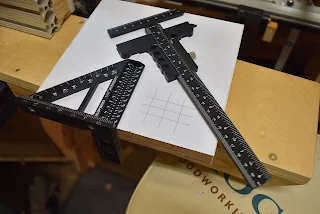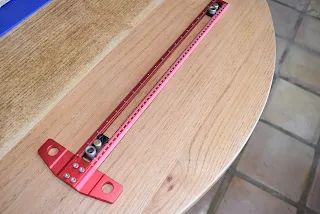A while back a dear friend was so adamant about not buying anything "Made in China". He said he was always willing to pay top dollar for anything made in the U.S. or Germany and, alternatively, would rather have them made in Japan or Taiwan. For him it was also his natural order of preference. What we never did discuss was that his iPhone which was always the latest updated model whenever one comes out, was "Made in China" while my always inferior brand (only by perception, of course, but not by performance) was made in S. Korea.
Like most everyone then who paid attention to quality, China was at the bottom of the list. Of course, by the same assessment, many decades earlier, Japanese toys and other merchandise after the war were viewed the same way. It took some while but later Sony television, the Walkman and Lexus, etc., erased all earlier preconceived notions. We can say, however, that perhaps there is no equivalence. Well, there is definitely no comparison. Japan's major cities and ports were reduced to rubble after 1945 but in less than two decades, with critical help, of course, from the U.S. on Japan's economy, Hondas and Toyotas were born. The Japanese labor force and technology had quite a head start compared to the Chinese general population in the 1950s.
Let me digress for just a bit. While I was in engineering school in the 60s the sought after slide rule was made by Keuffel & Esser (K&E), a U.S. brand. Only rich students, or rather those with rich parents, can afford it. Most of us settled on Hemmi slide rules. They were exact copies of the K&E, except that instead of the U.S. hardwood for the base inner bar, the Japanese maker used bamboo. As it turned out, the bamboo based Hemmi fared better in the tropical climate. My classmates with the K&Es resorted to using talcum powder between the slides as wood would expand and contract with changes in temperature and humidity. That was my first encounter with the ever improving Japanese innovation that completely erased my perception of cheap Japanese toys growing up. As an aside, had I held on to my Hemmi, or had my contemporaries held onto their K&Es, we could get top dollar for them today as collector's want them (nobody uses slide rules anymore; but lest we forget, scientists and engineers used them during the Apollo program that took the first men to the moon and back).
Now, back to Made in China.
Many years ago I came across these scissors online. They were imported by a Canadian company. It was under ten dollars for all four so I took a chance. They came packaged in brown paper and looked like they were indeed made in some backyard shop by a local craftsman. Rough hammer marks on the handles were prominently evident. The center rivets were handmade and hammered in. But they worked! Rather well, actually, that I still use them to this day at my shop. They easily cut plastic, rubber, etc. effortlessly.
From the above, mere examples that they are, we ought to acknowledge the Chinese factory workers' persevering craftsmanship as we do of the Japanese, the Germans, the Swiss, etc. Way back when, axes from Sweden (I still have the small one-handed version) were the best of well made axes. Many of them were handcrafted by countless craftsmen who forged them in their backyard furnaces.
Now, it must be acknowledged that every nation that ever came to be began the same way in the production of goods, tools and crafts. They all started with baby steps. In the early days of the history of America, England and every nation in Europe, the quality of production started the same way. Competition, discerning consumers, regulations and the natural trajectory of controlled mass production determined the survival of every producer of goods.
Civilizations developed from contributions of workers and the innovations that resulted from their individual and collaborative efforts. The Chinese gave us paper making, fine silk and gunpowder and fireworks. American workers gave us first some of the greatest advances in farming equipment that made agribusinesses and food production the backbone that propelled it to an economic power status, then followed by mass production of cars, earthmoving equipment, airplanes and shipbuilding, etc. in such a short period of time that after WWII, it became unquestionably an unrivaled economic and military superpower
Where and how did the reputation of poor quality and shoddy workmanship of Chinese made goods come about? Some were even reputed to be unsafe and harmful to the environment. Again, China too began with baby steps. However, because mass production in the quantity that it was done against a backdrop of already well made goods from developed nations, the comparison was way too glaringly obvious.
Fast forward to today and the picture has changed to the benefit of worldwide consumers. Then, far more quality goods are being produced now than poorly made ones today in China. Competition, like everywhere else all over the world, ruled the business of manufacturing coupled with a global marketplace where delivering the goods on time is as critical as the quality of the material. Online ordering and the ease by which consumers have access to reviews by existing consumers have become part of the market filtering world.
A few years ago one Chinese online merchandiser was so reviled by customer reviews where one said, "The brown paper wrapper was far superior in quality than the tool I ordered .."
Not anymore. The same supplier continued on and today is delivering good quality material. This is not to say that shoddy products no longer exist because they still do but the discriminating consumer is now a lot more discerning of how and where to shop online. Several things did occur.
(1) Chinese made "knock-offs" or copies of primarily U.S., Japanese and European designed products have improved (hopefully, they are paying royalties for the copies); (2) Foreign companies that set up shop there have kept the quality of workmanship at the highest level (example, Apple products, tennis shoes and rackets, apparel, etc.); (3) Sophisticated factory equipment and highly trained workers; ( 4) Low labor costs maintained (although questions about poor labor conditions are still being asked by those from the outside).
I can only speak to woodworking tools because that is where I have a little bit more knowledge than the average non-woodworking folks. For years I stayed away from Chinese made power tools and sharp edge implements. I remain adamant about power tools but recently I ventured into a few things and I was pleasantly surprised.
But first this one little anecdote. A while back I ordered this marking gauge - an exact copy of a U.S. brand. It came as two parts requiring assembly with two Allen screws. Unfortunately, the two parts didn't fit. After several email exchanges, the seller finally acquiesced to issue a refund. They did not want the item back. I guess they simply did not want to spend the additional cost for mailing. I didn't want to throw it away. One day I did a little bit of sanding along the mating surfaces bit by bit - not overdoing it - until both parts mated snugly. Voila, the two parts fit. It was just a quality control issue, I guess, so that perhaps the rest of the production line was just fine. Anyhow, I'm using it now as it was designed to be used. Accurately and usefully indeed.
Below are two jigs for cutting splines on box corners. The one on the right is almost an exact copy of the U.S. made one (left). The Chinese version has one improvement - a hold down arm to secure the workpiece. Note the U.S. version shows a hand holding the workpiece down. And the Chinese version is a third the price of the U.S. made one. It is of course easier to improve on an already existing tool, specially if one had no prior expense developing it. No different from what Hemmi did on the K&E slide rule.
Until I started writing this blog I didn't realize I had accumulated the number of hand tools that were made in China over the last few years. Notable among the three items below is a router plane. This is one design in use since the beginning of woodworking in Europe, before the power router was invented. This one was designed in the U.S. but manufactured in China, sold here at half the price of a U.S. version. It has excellent depth of cut adjustment knob and overall a well made product.















